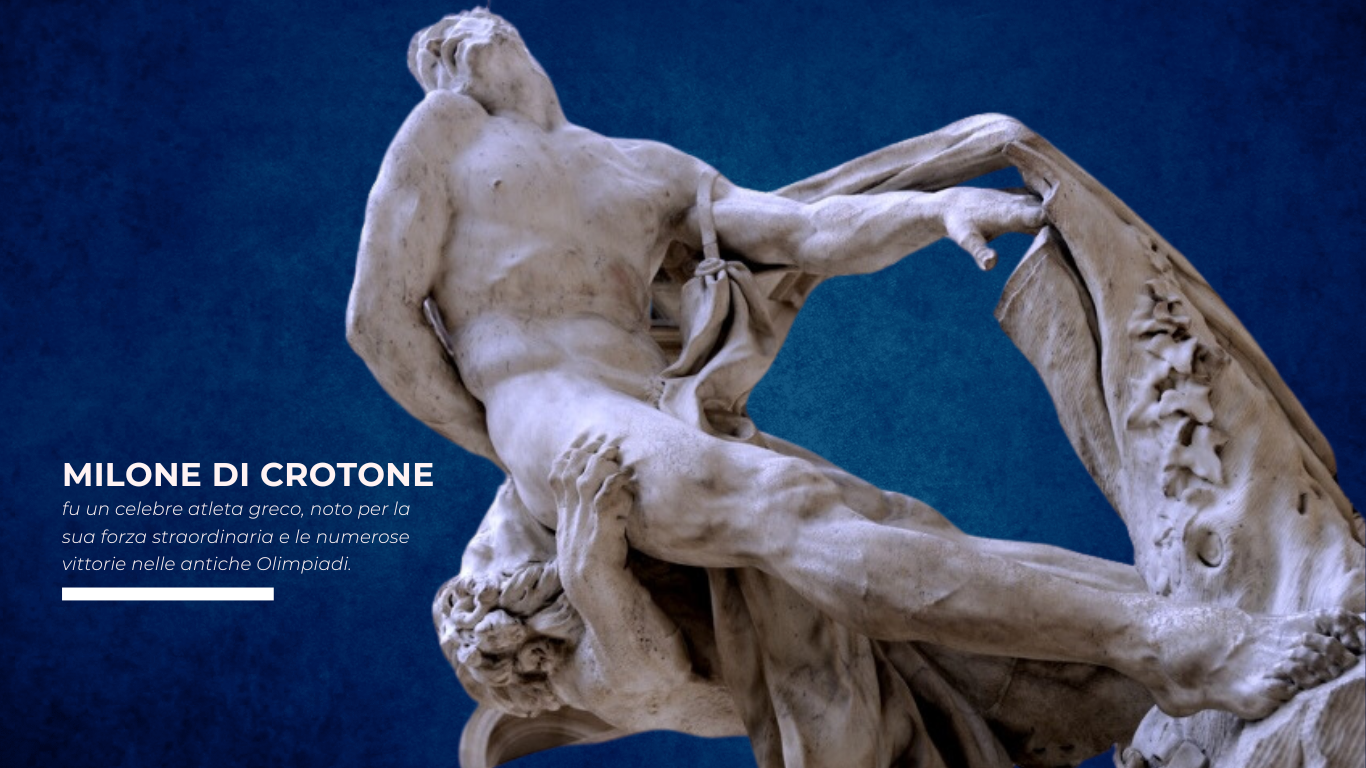
Milone di Crotone
Grande atleta crotoniate vissuto tra VI e V secolo a.C., famoso per la sua straordinaria forza, Milone fu il più grande campione di tutti i tempi nella lotta, vincendo nei principali agoni panellenici (7 volte alle Olimpiadi, 7 volte alle Pitiche, 9 volte alle Nemee, 10 volte alle Istmiche).
Discepolo del filosofo Pitagora e sacerdote di Hera Lacinia, fu egli a capeggiare l’esercito che nel 510 a.C. sconfisse la vicina città di Sibari.
Il gruppo scultoreo, intitolato Milon de Crotone (1671-1682), è una copia fatta realizzare dal Comune di Crotone nel 2015 presso l’Atelier de Moulage de la Réunion des Musées Nationaux di Parigi.
L’originale in marmo, attualmente esposto nel Museo del Louvre, è opera dell’artista francese Pierre Puget (1620-1694),commissionata da re Luigi XIV per i giardini della corte di Versailles, e raffigura la morte del leggendario personaggiosbranato da un leone.
In realtà, secondo il racconto degli antichi, Milone sarebbe stato aggredito da un branco di lupi che lo sorpresero con le mani incastrate nella fenditura del tronco di un vecchio albero. Il racconto significa che ogni uomo, anche il più possente, deve rispettare i limiti impostigli dalla natura.
Great athlete from Crotone who lived between the 6th and 5th century BC, famous for his extraordinary strength, Milon was the greatest wrestling champion of all time, winning in the major Panhellenic games (7 times at the Olympics, 7 times at the Pythian Games, 9 times at the Nemean Games, 10 times at the Isthmian Games).
A disciple of the philosopher Pythagoras and apriest of Hera Lacinia, he led the army that in 510 BC defeated the neighbouring city of Sybaris.
The sculptural group, titled Milon de Crotone (1671-1682), is a copy commissioned in 2015 by the Municipality of Crotone from the Atelier de Moulage de la Réunion des Musées Nationaux in Paris.
The original marble statue, currently exhibited in the Louvre Museum, is the work of the French artist Pierre Puget (1620-1694), commissioned by King Louis XIV for the gardens of the Versailles court and depicts the death of the legendary figure being devoured by a lion.
In reality, according to the ancient account, Milon was attacked by a herd of wolves that surprised him with his hands stuck in the cleft of an old tree trunk. The story signifies that every man, even the mightiest, must respect the limits imposed by nature.





















